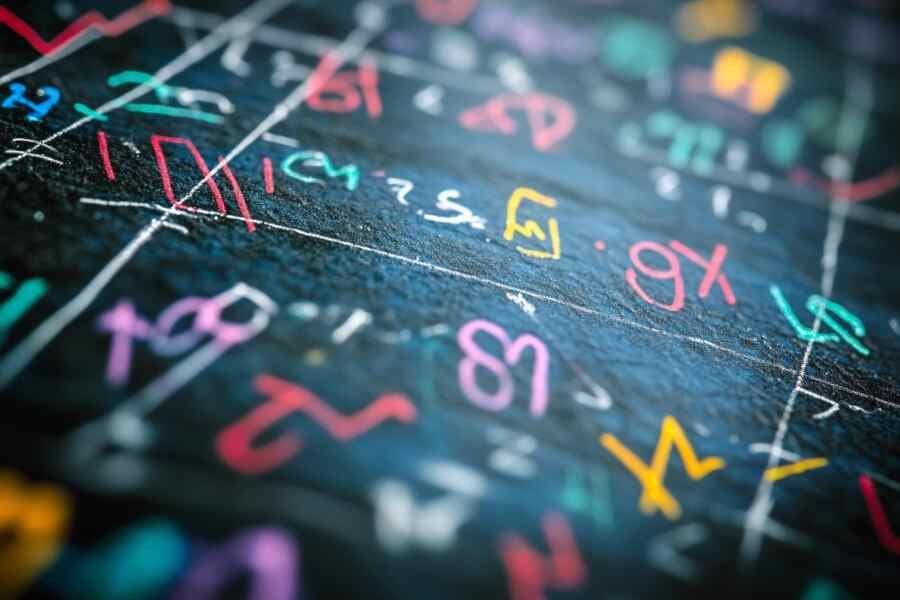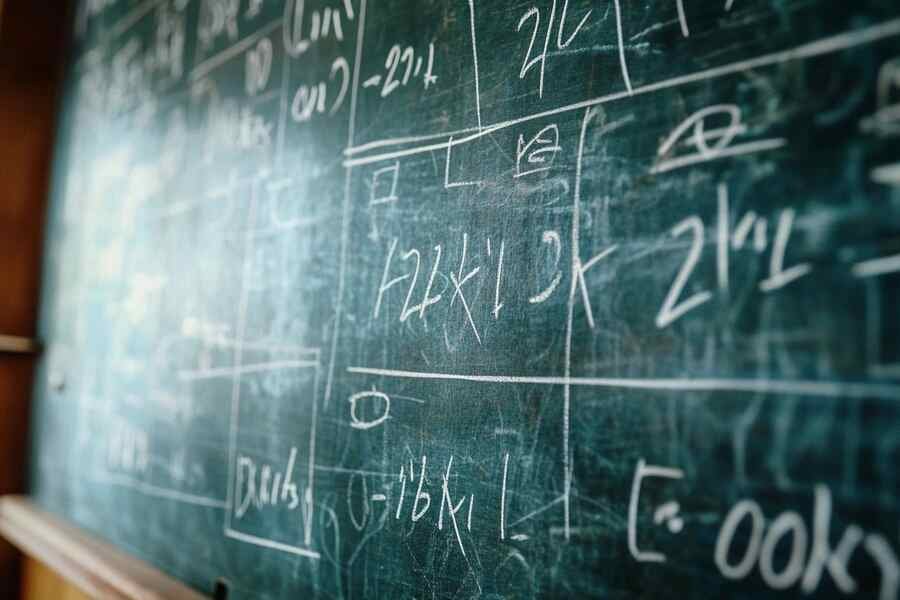Vigesimal Numbers
The vigesimal numbers system or base 20 system is a numbering system based on the number twenty (in the same way that the decimal system is based on the number ten).
Notation system
The vigesimal notation system needs twenty digits or symbols, ten more than the decimal system. A modern system, similar to that used in computing by the hexadecimal system , is to use the ten digits “0-9” and the first ten letters of the alphabet “AJ” (or the letters “AK” without using the letter “I “, as it could be confused with the number “1”). In this way, for example, the number eleven is written as A 20 (the 20 means base 20), or the number twenty is written as 10 20.
According to this notation:
- 20 20 means forty in decimal {= (2 × 20¹ + (0 × 20 0 )}
- DA 20 means two hundred seventy in decimal {= (13 × 20¹) + (10 × 20 0 }
- 100 20 means four hundred in decimal {= (1 × 20²) + (0 × 20¹) + (0 × 20 0 )}.
In the rest of this article numbers without the suffix 20 express quantities in decimal notation unless otherwise specified. For example, 10 means ten, 21 means twenty-one.
The usage of Vigesimal Numbers
Base 20 is at the root of many numbering systems (since 20 are the fingers and toes used for counting). This has conditioned the linguistic structure in the names of certain numbers. Remnants of this are still found in many modern European languages, such as French, in the words for certain numbers (80 for example), and even more so in Basque, which calls 40, 60 and 80 as to multiples of 20.
The Maya numerals are an example of a base-20 numeral system or Vigesimal Numbers. Original: Neuromancer2K4 Vector: Bryan Derksen, CC BY-SA 3.0, via Wikimedia Commons
The multiplication table of Vigesimal
| 1 | 2 | 3 | 4 | 5 | 6 | 7 | 8 | 9 | A | B | C | D | E | F | G | H | I | J | 10 |
|---|---|---|---|---|---|---|---|---|---|---|---|---|---|---|---|---|---|---|---|
| 2 | 4 | 6 | 8 | A | C | E | G | I | 10 | 12 | 14 | 16 | 18 | 1A | 1C | 1E | 1G | 1I | 20 |
| 3 | 6 | 9 | C | F | I | 11 | 14 | 17 | 1A | 1D | 1G | 1J | 22 | 25 | 28 | 2B | 2E | 2H | 30 |
| 4 | 8 | C | G | 10 | 14 | 18 | 1C | 1G | 20 | 24 | 28 | 2C | 2G | 30 | 34 | 38 | 3C | 3G | 40 |
| 5 | A | F | 10 | 15 | 1A | 1F | 20 | 25 | 2A | 2F | 30 | 35 | 3A | 3F | 40 | 45 | 4A | 4F | 50 |
| 6 | C | I | 14 | 1A | 1G | 22 | 28 | 2E | 30 | 36 | 3C | 3I | 44 | 4A | 4G | 52 | 58 | 5E | 60 |
| 7 | E | 11 | 18 | 1F | 22 | 29 | 2G | 33 | 3A | 3H | 44 | 4B | 4I | 55 | 5C | 5J | 66 | 6D | 70 |
| 8 | G | 14 | 1C | 20 | 28 | 2G | 34 | 3C | 40 | 48 | 4G | 54 | 5C | 60 | 68 | 6G | 74 | 7C | 80 |
| 9 | I | 17 | 1G | 25 | 2E | 33 | 3C | 41 | 4A | 4J | 58 | 5H | 66 | 6F | 74 | 7D | 82 | 8B | 90 |
| A | 10 | 1A | 20 | 2A | 30 | 3A | 40 | 4A | 50 | 5A | 60 | 6A | 70 | 7A | 80 | 8A | 90 | 9A | A0 |
| B | 12 | 1D | 24 | 2F | 36 | 3H | 48 | 4J | 5A | 61 | 6C | 73 | 7E | 85 | 8G | 97 | 9I | A9 | B0 |
| C | 14 | 1G | 28 | 30 | 3C | 44 | 4G | 58 | 60 | 6C | 74 | 7G | 88 | 90 | 9C | A4 | AG | B8 | C0 |
| D | 16 | 1J | 2C | 35 | 3I | 4B | 54 | 5H | 6A | 73 | 7G | 89 | 92 | 9F | A8 | B1 | BE | C7 | D0 |
| E | 18 | 22 | 2G | 3A | 44 | 4I | 5C | 66 | 70 | 7E | 88 | 92 | 9G | AA | B4 | BI | CC | D6 | E0 |
| F | 1A | 25 | 30 | 3F | 4A | 55 | 60 | 6F | 7A | 85 | 90 | 9F | AA | B5 | C0 | CF | DA | E5 | F0 |
| G | 1C | 28 | 34 | 40 | 4G | 5C | 68 | 74 | 80 | 8G | 9C | A8 | B4 | C0 | CG | DC | E8 | F4 | G0 |
| H | 1E | 2B | 38 | 45 | 52 | 5J | 6G | 7D | 8A | 97 | A4 | B1 | BI | CF | DC | E9 | F6 | G3 | H0 |
| I | 1G | 2E | 3C | 4A | 58 | 66 | 74 | 82 | 90 | 9I | AG | BE | CC | DA | E8 | F6 | G4 | H2 | I0 |
| J | 1I | 2H | 3G | 4F | 5E | 6D | 7C | 8B | 9A | A9 | B8 | C7 | D6 | E5 | F4 | G3 | H2 | I1 | J0 |
| 10 | 20 | 30 | 40 | 50 | 60 | 70 | 80 | 90 | A0 | B0 | C0 | D0 | E0 | F0 | G0 | H0 | I0 | J0 | 100 |
Examples of the mathematical use of Vigesimal Numbers
In base 20, twenty digits (or graphic signs) are used, which is ten more than in the usual decimal system. As with any base number greater than 10, the symbols to represent digits beyond nine are obtained using the letters of the alphabet, starting from A for ten, and up to J for nineteen. Another method of notation skips the letter I (capital i equals eighteen) to avoid confusion with the number 1. Thus the number eighteen is written J and 19 is written K for advance of the notation used.
The number is followed by the subscript 20 to indicate the base used. In summary:
| Desimal | 0 | 1 | 2 | 3 | 4 | 5 | 6 | 7 | 8 | 9 | 10 | 11 | 12 | 13 | 14 | 15 | 16 | 17 | 18 | 19 | 20 |
|---|---|---|---|---|---|---|---|---|---|---|---|---|---|---|---|---|---|---|---|---|---|
| Duodecimal or twelfth | 0 | 1 | 2 | 3 | 4 | 5 | 6 | 7 | 8 | 9 | A | B | 10 | 11 | 12 | 13 | 14 | 15 | 16 | 17 | 18 |
| Vigesimal | 0 | 1 | 2 | 3 | 4 | 5 | 6 | 7 | 8 | 9 | A | B | C | D | E | F | G | H | I | J | 10 |
| other method | 0 | 1 | 2 | 3 | 4 | 5 | 6 | 7 | 8 | 9 | A | B | C | D | E | F | G | H | J | K | 10 |
As in any number system, the number equal to the value of the base is written 10, in this case twenty is written 1020.
- Notation rating breakdown:
- 2020 = 3412 = 4010 (in fact, 2×20 = 40)
- 6F20 = B312 = 13510 (in fact, 6×20 + 15 = 135)
- DA20 = 1A612 = 27010 (in fact, 13×20 + 10 = 270)
- 10020 = 29412 = 40010 (in fact, 1×202 = 400)
- 4J920 = 119912 = 198910 (in fact, 4×202 + 19×201 + 9 = 1989)
- 51420 = 120812 = 202410 (in fact, 5×202 + 1×201 + 4 = 2024)
- 8CG20 = 200012 = 345610 (in fact, 8×202 + 12×201 + 16 = 3456)
- 100020 = 476812 = 800010 (in fact, 1×203 = 8000)
- 234020 = A00012 = 1728010 (in fact, 2×203 + 3×202 + 4×201 = 17280).
- 7FA820 = 3000012 = 6220810 (in fact, 7×203 + 15×202 + 10×201 + 8 = 62208).
- 1000020 = 7871412 = 16000010 (in fact, 1×204 = 160000)
- 10EE820 = 8000012 = 16588810 (in fact, 1×204 + 0×203 + 14×202 + 14×201 + 8 = 165888).
- 1B21C20 = 10000012 = 24883210 (in fact, 1×204 + 11×203 + 2×202 + 1×201 + 12 = 248832).
Examples of arithmetic operations
| Decimal | Vigesimal | Duodecimal |
|---|---|---|
| 270 + 45 = 315 | DA + 25 = FF | 1A6 + 39 = 223 |
| 1989 – 135 = 1854 | 4J9 – 6F = 4CE | 1199 – B3 = 10A6 |
| 184 × 11 = 2024 | 94 × B = 514 | 134 × B = 1208 |
| 17280 ÷ 9 = 1920 | 2340 ÷ 9 = 4G0 | A000 ÷ 9 = 1140 |
Calculation example
- Hexadecimal 1/5 indivisible
- Hexadecimal : 100 ÷ 5 = 20
- Vigesimal: CG ÷ 5 = 2B.4
- Duodecimal 1/13 indivisible
- Duodecimal: 2000 ÷ 13 = 172.4972…
- Vigesimal: 8CG ÷ F = BA.8
Exponentiation (power)
- Senary: 10 = 2×3 (A senary system is a base six number system)
- Decimal: 10 = 2×5
- Duodecimal: 10 = 4×3
- Vigesimal: 10 = 4×5
Power of twenty by vicesimal notation
| Exposant | Vigesimal | Duodecimal equivalent | Decimal equivalent | Senary equivalent |
|---|---|---|---|---|
| 1 | 10 | 18 | 20 | 32 |
| 2 | 100 | 182 = 294 | 202 = 400 | 322 = 1 504 |
| 3 | 1 000 | 183 = 4 768 | 203 = 8 000 | 323 = 101 012 |
| 4 | 10 000 | 184 = 78 714 | 204 = 160 000 | 324 = 3 232 424 |
| 5 | 100 000 | 185 = 1 0A3 A28 | 205 = 3 200 000 | 325 = 152 330 452 |
| 6 | 1 000 000 | 186 = 19 525 054 | 206 = 64 000 000 | 3210 = 10 203 424 144 |
| 7 | 10 000 000 | 187 = 2B8 804 8A8 | 207 = 1 280 000 000 | 3211 = 331 002 501 532 |
| 8 | 100 000 000 | 188 = 4 B65 47A 994 | 208 = 25 600 000 000 | 3212 = 15 432 132 502 304 |
| 9 | 1 000 000 000 | 189 = 83 28B 920 368 | 209 = 512 000 000 000 | 3213 = 1 031 113 132 522 212 |
| A | 10 000 000 000 | 18A = 1 194 6B7 345 B14 | 2010 = 10 240 000 000 000 | 3214 = 33 440 105 133 555 224 |
| B | 100 000 000 000 | 18B = 1A B77 741 75A 628 | 2011 = 204 800 000 000 000 | 3215 = 2 003 323 453 211 540 052 |
| C | 1 000 000 000 000 | 1810 = 323 488 2A8 596 454 | 2012 = 4 096 000 000 000 000 | 3220 = 104 155 244 231 222 522 544 |
| -1 | 0.1 | 1/18 | 0.05 | 1/32 |
| -2 | 0.01 | 1/294 | 0.0025 | 1/1504 |
| -3 | 0.001 | 1/4768 | 0.000125 | 1/101012 |
Fractions and divisions
Vigesimal fraction is the same as decimal, their prime factors are 2 and 5. The biggest difference between decimal system and vicesimal system is divisibility by 4. Decimal 10 is indivisible by 4 and its quotient is 2.5. But, vicesimal 10 is divisible by 4, its quotient is 5.
In addition, divisibility by 4 and an odd number is the common property of duodecimal and vicesimal: duodecimal 10÷3 = 4, vicesimal 10÷5 = 4.
The divisor is 1020 or less:
- 1 / 2 = 0,A
- 1 / 3 = 0,6D6D6D6D répétition
- 1 / 4 = 0,5
- 1 / 5 = 0,4
- 1 / 6 = 0,36D6D6D6D répétition
- 1 / 7 = 0.2H2H2H2H répétition
- 1 / 8 = 0,2A
- 1 / 9 = 0,248HFB248HFB répétition
- (1/1010) 1 / A = 0,2
- (1/1210) 1 / C = 0,1D6D6D6D6 répétition
- (1/1510) 1 / F = 0,16D6D6D6D répétition
- (1/1610) 1 / G = 0,15
- (1/1810) 1 / I = 0,1248HFB248HFB répétition
- (1/2010) 1 / 10 = 0,1
Divisor is 1120 or greater:
- (1/2510) 1 / 15 = 0,0G
- (1/4010) 1 / 20 = 0,0A
- (1/5010) 1 / 2A = 0,08
Main fraction:
- 1 / 2 = 0,A
- 1 / 3 = 0,6D6D…
- 2 / 3 = 0,D6D6…
- 1 / 4 = 0,5
- 3 / 4 = 0,F
- 1 / 5 = 0,4
- 2 / 5 = 0,8
- 3 / 5 = 0,C
- 4 / 5 = 0,G
Sources: PinterPandai, Britannica, Convertworld
Photo credit: Mdsats at English Wikipedia (Public Domain) via Wikimedia Commons
Photo description: the equation “5 + 8 equal 13” written with Maya numerals.



